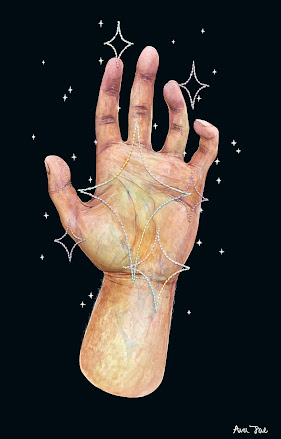When students walk into my Beginning Art class on the first day of school, I know I’m meeting them at very different starting points.
Some have been drawing for years. Some are naturally creative but haven’t had much structure. And others? They’ll tell me - sometimes proudly - that they "can’t even draw a stick figure." Not every student comes in by choice—some were placed in the class to complete their schedule, and aren’t sure what to expect.
That range is exactly what makes teaching this course so interesting, challenging and exciting.
Beginning Art isn’t about natural-born talent. It’s about helping every student, regardless of their background, see that art is a skill they can learn, just like math or science. Yes, it’s expressive and creative. But it’s also full of vocabulary, process, and skill-building. And when students begin to understand how art works, the fear starts to fade and the confidence begins to grow.
To illustrate this to students, I show them how much growth some of my students have achieved. For example, the images below were created by the same student - one during her 9th grade year, and one during her 12th grade year.
Start With the Truth: Art Is Learnable
One of the most powerful ways I start the semester is by introducing students to Lowenfeld’s Stages of Artistic Development. It’s a lightbulb moment for so many of them.
Instead of thinking, “I’m just not artistic,” they begin to realize, “Oh, this is a skill I can develop.”
We look at examples, identify what stage they might be in, and talk about how practice, feedback, and learning vocabulary can help them grow. For students who feel like they’re "behind," it’s validating. For those who’ve always drawn intuitively, it gives language to what they already do, and a path forward to keep improving.
Unit 1: Laying the Foundation with Permission to Play
The first unit in my Art 1 curriculum is all about building that foundation. We go over:
-
The Stages of Artistic Development
-
Basic vocabulary: portrait vs. still life, landscape, media, and more
How to navigate critique in a supportive, productive way
At the same time, we begin a low-pressure art activity inspired by
expressive portraiture - playful, layered, and totally unique. This piece becomes a creative thread that runs through the first few weeks, giving students space to explore while they build their visual vocabulary.
 |
Art 1 expressive portrait by Serena T.
|
Unit 2: Elements & Principles - The Visual Grammar of Art
In Unit 2, we shift into the visual grammar of art: the Elements of Art and Principles of Design. These form the foundation of every art decision they’ll make moving forward.
Students:
Define each element and principle in their sketchbook
-
View real artwork examples and sketch visual interpretations
-
Learn to use formal vocabulary in writing and discussion
-
Analyze artwork using short, scaffolded writing activities
-
Track their understanding through a pre/post assessment and mastery checklist
Even though there’s no major final project in this unit, students are learning to see like artists, and that matters just as much as learning to create like one.
Of course, the ongoing expressive portrait assignment continues during any downtime. It’s a constant reminder that art doesn’t have to be polished to be powerful.
 |
| Art 1 Expressive Portrait by Daphne Q. |
Unit 3: Classifying and Critiquing Art
By Unit 3, students have a strong vocabulary and a growing sense of confidence. Now it’s time to teach them how to think more deeply and write about what they see.The differences between
representational,
abstract, and
non-objective art
Understanding the differences between representational, abstract, and non-objective art
-
Breaking down the four steps of critique: Describe, Analyze, Interpret, Evaluate
-
Practicing critique collaboratively before writing one independently
-
Using a scaffolded format to write a complete, formal critique of an artwork
It’s a big step, but students are ready. Because we’ve taken the time to lay the groundwork, they’re no longer intimidated by “art speak.” They know what to look for. They have the words. And they’re ready to use them.
Building a Strong Foundation, One Layer at a Time
The first few weeks of art class aren’t about flashy projects or gallery-ready pieces. They’re about building confidence, vocabulary, and a sense of identity as an artist.
Each unit in my Beginning Art curriculum is designed to build on the last - helping students move from uncertainty to self-assurance, from “I can’t draw” to “I see what I did well, and what I can improve.”
If you’re looking for structured, student-friendly resources to support your own Beginning Art students, I’ve built these materials with flexibility, standards alignment, and classroom-tested experience in mind:
Want to take the guesswork out of planning? The full Canvas-ready module is available for those who prefer plug-and-play instruction for Unit 2 AND Unit 3!


.jpg)


.jpg)










.png)
.png)
.png)
.png)
.png)









.png)
















